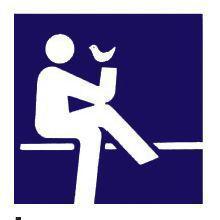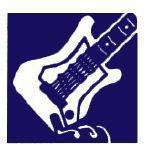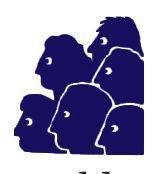SAS Urban Survival Handbook (71 page)
Read SAS Urban Survival Handbook Online
Authors: John Wiseman
Tags: #Health & Fitness, #Reference, #Survival, #Fiction, #Safety, #Self-Help, #Personal & Practical Guides, #General, #Survival Skills

WORKING OUTSIDE
Dress appropriately for the weather, making allowances for possible changes. Alternatively, take appropriate changes of clothes to your worksite. It may be relatively easy to strip off if it gets warm, but having no extra protection against the cold and wet is inviting health risks if you are exposed for long periods. Feet and hands are at risk from working continually in wet conditions. Fingers, toes, nose and chin are vulnerable to frostbite when temperatures are very low.
Long-term exposure to heat and sunlight can have serious consequences. Apart from the very real dangers of dehydration, sunburn and sunstroke/heatstroke are common. In severe cases these lead to death. The possibility of skin cancers should be considered.
Try to work in the shade and cover skin with light clothing. Sunblock creams can be used to protect the nose, ears and shoulders. The head and the back of the neck should ALWAYS be covered. Other areas of skin should be protected by creams which reduce the harmful effects of the sun’s rays. Make sure you have access to cooling drinks at all times.
Never underestimate the powerful effects of the sun on the naked eye. Eye damage can be permanent and disabling, and anyone working outside is at risk. Sight should be considered a non-renewable resource—arm yourself with high-protection sunglasses which filter rays and reduce glare.
LEISURE
 There are no areas in our lives where safety can be ignored. The activities we choose for relaxation often put us at risk in some way. Sometimes the element of danger is part of the appeal of a particular pursuit,
There are no areas in our lives where safety can be ignored. The activities we choose for relaxation often put us at risk in some way. Sometimes the element of danger is part of the appeal of a particular pursuit,
because it makes it more exciting. Some sports – jet-skiing or rock climbing, for instance – are inherently dangerous. Many others – football, rugby, ice hockey – involve considerable rough and tumble that can lead to injury (see Sport).
Do-it-yourself and crafts may carry a wide variety of health risks (see DIY/CRAFT HAZARDS).
TELEVISION
 Less obvious are the dangers from passive leisure activities such as watching television! Television plays a very important role in our lives, gives a lot of pleasure and genuinely aids relaxation—but all colour televisions produce x-rays. Although shields within the appliance give protection, people who watch for many hours sitting close to the screen could be doing themselves harm.
Less obvious are the dangers from passive leisure activities such as watching television! Television plays a very important role in our lives, gives a lot of pleasure and genuinely aids relaxation—but all colour televisions produce x-rays. Although shields within the appliance give protection, people who watch for many hours sitting close to the screen could be doing themselves harm.
The level of risk to adults may be small but added to natural background radiation levels and the small amounts emitted by other household equipment, it will be cumulative. Avoid too much exposure and reduce the risk of cancers by not sitting too close.
When playing video and computer games you are much closer to the screen than when watching television programmes. This increases the risk from radiation and contributes to eyestrain, so take extra care.

WARNING
Do not leave babies for long periods near a television that is switched on—not just in front of the screen, but at the side or behind the appliance too. They could be affected by the radiation it produces.
Out of condition
A greater risk for the ‘couch potato’ is the reduction of any kind of physical activity, which is encouraged by watching excessive amounts of television.
It’s easy to get out of condition. If you haven’t played sport or taken exercise for some time, be wary of being talked into joining the office sports team or taking the family on a hike. You may not be up to it—as many people discover when they try to run to catch a bus!
MUSIC
 More quantifiable is hearing damage from the use of ‘personal stereos’ played at high volume. A Swedish study showed that people regularly listen to pop music at a volume above 100 dB—the European Community has a legal limit for workplaces of 90 dB over a day and never higher than 96 dB for more than two hours.
More quantifiable is hearing damage from the use of ‘personal stereos’ played at high volume. A Swedish study showed that people regularly listen to pop music at a volume above 100 dB—the European Community has a legal limit for workplaces of 90 dB over a day and never higher than 96 dB for more than two hours.
Wearing a personal stereo in the street, or while walking, cycling or driving could be very dangerous. Pedestrians and cyclists rely on their hearing as well as their eyes to warn them of approaching vehicles and other hazards. Even while driving it is important to hear what is happening around you so that you can be prepared to take appropriate action.

WARNING
Don’t risk hearing loss. Turn the volume down before you switch your personal stereo on and then adjust to a comfortable level. Sudden exposure to a blast of sound is particularly damaging.
Sound levels at rock concerts are often well above the 100dB level, and in nightclubs may reach four times the European Community’s workplace limit. Disc jockeys in nightclubs are particularly at risk. They should either work in a cubicle where the sound level is greatly reduced or wear earphones to hear the music at a safer level.
REMEMBER
Hearing loss usually begins with the higher notes – a buzzing or ringing sensation may develop and persist after the music has stopped. At first the damage is usually temporary – but heed the warning and avoid further regular exposure to high noise levels.
Electric/electronic musical instruments
Many electric/electronic musical instruments rely on full mains voltage—treat them with respect. Do NOT attempt rewiring or experiment with combinations of instruments/amplifiers/ accessories, unless you really understand what you are doing. Make sure that all plugs and leads are capable of taking the loads imposed on them—physical and electrical (see SAFETY FIRST:
Electricity
). BEWARE of playing in rain or wet locations. You could cause a short circuit, start a fire or—at worst—be electrocuted!
BARBECUES
Brick-built barbecues, with steel cages for the coals, are safest – if you want to build your own. NEVER be tempted to use stone or concrete slabs as a base for the coals – they could explode. Ready-made barbecues could be safer still—look for expected national seals of approval.
- ■
Watch out for partly-cooked meat – serious food poisoning may result - ■
Don’t barbecue meat or fish straight from the freezer. It may not be fully cooked inside when it looks burnt on the outside - ■
Partially cook food in a microwave before barbecuing - ■
Choose wood-handled tools, where possible, to avoid burning your hands - ■
Keep children/pets away from the cooking area - ■
Don’t site the barbecue under trees, near foliage, fences or sheds which might catch fire - ■
ALWAYS have a fire extinguisher or a fire bucket handy - ■
NEVER throw petrol or other flammable liquids onto a sluggish fire. Use small amounts of lighting fuel BEFORE lighting - ■
Store fuel and firelighters SAFELY – away from children
SPECTATORS
 There have been a number of recent cases of disasters in sports stadia. Check out exits and escape routes as you enter. Choose locations where you could not be trapped in a crowd. Don’t let your involvement in the game blind you to the development of an ugly atmosphere among spectators or the start of violent confrontations. Get out before you get involved (see SELF-DEFENCE:
There have been a number of recent cases of disasters in sports stadia. Check out exits and escape routes as you enter. Choose locations where you could not be trapped in a crowd. Don’t let your involvement in the game blind you to the development of an ugly atmosphere among spectators or the start of violent confrontations. Get out before you get involved (see SELF-DEFENCE:
Caught in a crowd
).
Spectator injuries
Some grounds have netting between spectators and the pitch, but at many—especially amateur matches—there is always the chance of a ball or puck being kicked or driven into the crowd. Be as alert as you want your home team to be!
At motorsports events avoid positions by the rails at dangerous corners. Such locations are not only more risky for the spectators, but increase the dangers to drivers if they try to avoid crashing into the crowd. Crash barriers may be inadequate if there is a serious collision involving flying debris, catapulted vehicles or fire.
